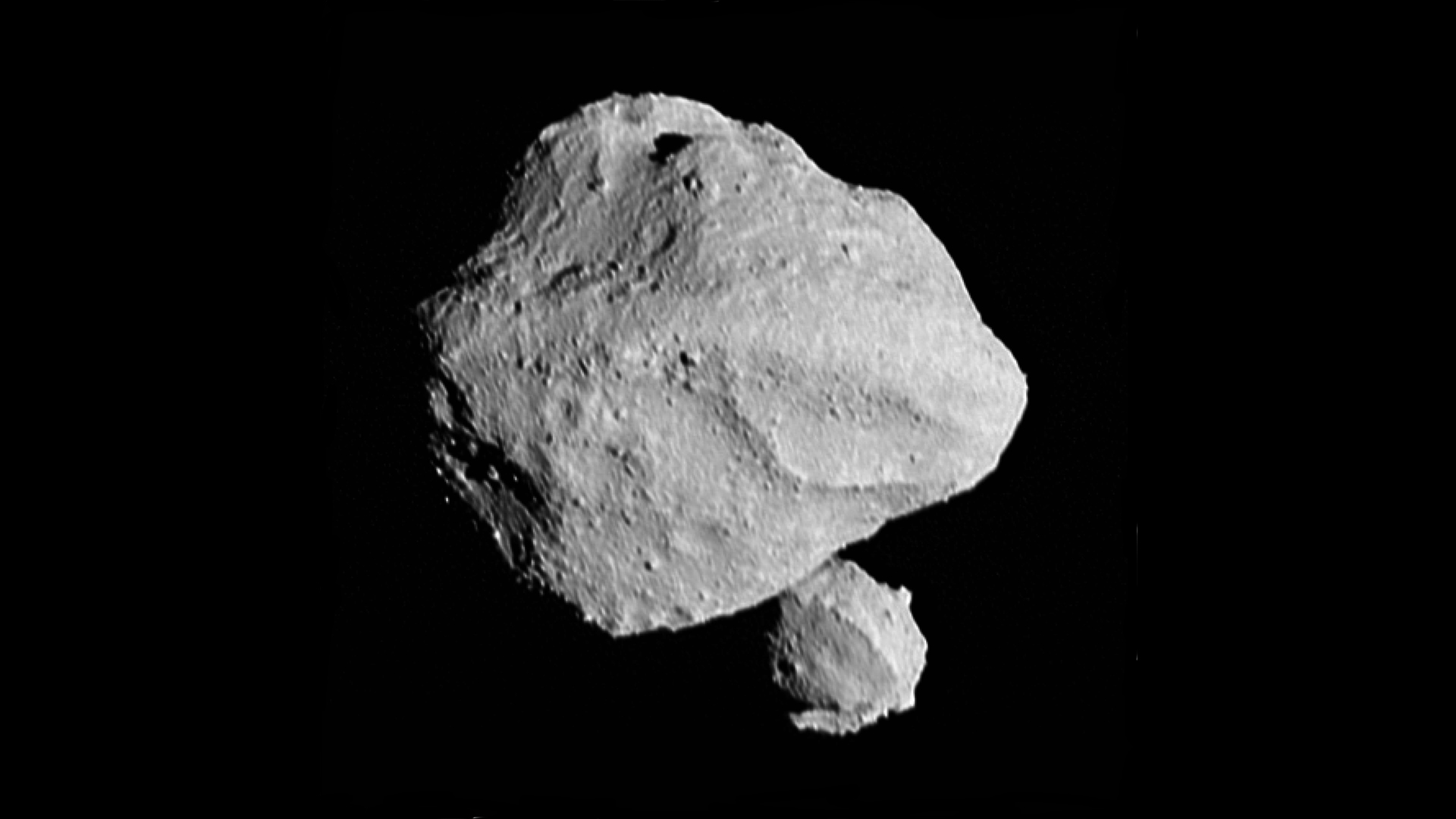The weird shapes of the tiny asteroids Dimorphos and Selam have perplexed astronomers for years, however a brand new research lastly explains how they obtained so unusual. It additionally suggests these bizarrely formed “moonlets” could also be extra frequent than scientists thought.
Binary asteroids — pairs of asteroids which can be basically mini variations of the Earth-moon system — are fairly frequent in our cosmic neighborhood. These embrace the Didymos-Dimorphos duo that headlined NASA’s 2022 Double Asteroid Redirection Check (DART) mission. Earlier analysis means that such binary asteroids kind when a rubble-pile “mum or dad” asteroid — composed of loosely held rocks — spins so quick that it sheds a few of its mass, which coalesces into the second, smaller satellite tv for pc or “moonlet” asteroid.
Most moonlet asteroids appear to be upright, blunt-ended footballs as they orbit their sometimes top-shaped dad and mom; such moonlets are described as being “prolate.” However some have odder shapes. Take Dimorphos — that’s, earlier than DART impacted it. It was an “oblate spheroid” — a sphere squished at its poles and stretched alongside its midriff, like a watermelon. And tiny Selam, the not too long ago found satellite tv for pc of the asteroid Dinkinesh (aka “Dinky”), is much more peculiar, consisting of two related rocky spheres.
The moonlets’ bizarre shapes have puzzled astronomers, together with John Wimarsson, a graduate pupil on the College of Bern in Switzerland and the brand new research’s lead writer. “We have now by no means seen such asteroid satellites earlier than and so they can’t be instantly defined by conventional binary asteroid formation fashions,” he advised Stay Science by e mail.
To know the asteroids’ odd shapes, Wimarsson and his colleagues — from European and American universities — developed two units of detailed laptop fashions. The primary set simulated how the mum or dad asteroids’ shapes would change as they spun quickly and flung out particles. The second set assumed the particles fashioned a doughnut-shaped zone — referred to as the particles disk — across the mum or dad asteroid. The algorithms then tracked the motion of all of the fragments as they skilled gravitational tugs from one another and their mum or dad and collided to kind aggregates. The researchers additionally thought of two sorts of mum or dad asteroids, resembling “rubber-ducky” Ryugu and Didymos in dimension and density.
The outcomes, printed on-line July 20 within the journal Icarus, revealed that there are two main elements that govern a moonlet asteroid’s ultimate form: the gravitational drive the mum or dad exerts, and the character of collisions the moonlet endures with different rocky objects within the particles disk.
Nonetheless, different parameters decide which of those elements performs an even bigger position. One parameter is the mum or dad asteroid’s density. Denser asteroids, like Didymos, spin quicker than lighter, Ryugu-like ones, creating wider particles disks, which, in flip, trigger moonlets to kind farther away from the mum or dad.

The researchers discovered that satellites that kind a sure distance from the mum or dad often purchase prolate shapes. At this distance, referred to as the Roche restrict, the mum or dad’s gravity balances out the moonlet asteroid’s inner drive, sustaining the moonlet’s form because it slowly grows by colliding and fusing with different particles.
However, moonlet asteroids that kind past the Roche restrict purchase oblate shapes as a result of they’re past the gravitational grip of the mum or dad asteroid. As they collide with different, co-orbiting rock particles, they develop extra uniformly than their prolate counterparts. Nonetheless, most oblate asteroids kind method under the Roche restrict; being too shut causes moonlets to get ripped aside by the mum or dad asteroid’s gravity, making them lose their prolate shapes. Such moonlets usually tend to be formed into oblate spheroids after colliding with different precursor moonlets.
The angle at which two precursor moonlets collide can also be necessary in figuring out the ultimate form. Based on Wimarsson, if the 2 asteroids collide aspect to aspect in order that they align alongside their brief axes, the ensuing form is extra oblate. “If we however had been to merge them edge-to-edge such that their longest axes are aligned, this creates a bilobate [two-lobed] object,” just like the moonlet Selam, he added.
The crew’s findings lengthen past offering recipes for the shapes of Dimorphos and Selam. Contemplating that almost half of their simulations generated abnormally formed asteroids, the researchers imagine such oddities could also be extra frequent than beforehand estimated. However as a result of the tech used to review asteroids right now is biased towards recognizing oblate asteroids, they’re usually missed.



